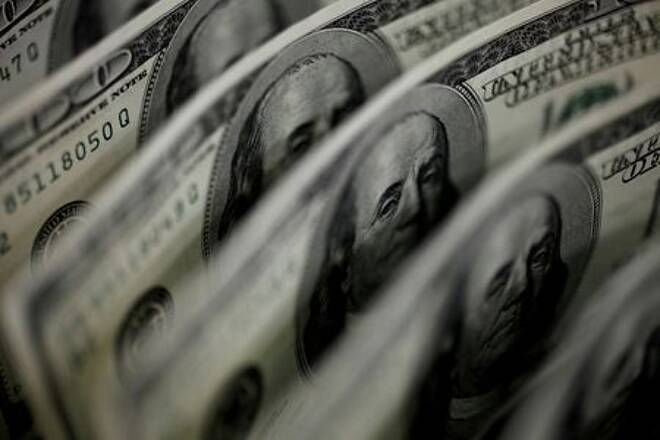Advertisement
Advertisement
Dollar Slips Further as Oil Jumps, Commodity Currencies Gain
By:
NEW YORK/LONDON (Reuters) -The dollar eased further on Tuesday as risk-related currencies benefited from rising commodity prices and markets set aside concerns about the spread of the Delta coronavirus variant to gauge data that showed a U.S. economy in strong recovery mode.
Risk appetite in global markets strengthened after the U.S. Food and Drug Administration on Monday granted full approval to the COVID-19 vaccine developed by Pfizer and BioNTech in a move that could accelerate U.S. inoculations.
A bounce in China’s technology sector also contributed to risk-on sentiment that helped boost the Canadian, Australian and New Zealand dollars.
“The euro, Canada and Aussie currencies made new lows for the year last week, and so the dollar is consolidating and its upside momentum has stalled,” said Marc Chandler, a managing director at Bannockburn Global Forex.
The dollar index, which measures the greenback against a basket of six currencies, fell 0.091% to 92.903.
The euro was up 0.08% at $1.1752, while the yen traded down 0.01% at $109.6700.
Rising COVID-19 infections caused by the highly contagious Delta variant have fueled concerns about the recovery from the pandemic. But markets have largely overlooked that this week, with analysts citing thin liquidity as a factor driving apparent swings in risk appetite.
Market attention is focused on the Federal Reserve’s Jackson Hole conference on Friday, at which some investors expect Fed Chair Jerome Powell to hint on a possible timeline for tapering the U.S. central bank’s bond-buying monetary stimulus.
“We think investors will want to wait to hear on this subject from Jerome Powell on Friday before pushing ahead with another major round of risk-buying, dollar-selling,” ING strategists wrote in a note to clients.
COVID-19 case counts are also being watched closely, particularly in China and New Zealand. Outbreaks in China appear to be coming under control while in New Zealand, where monetary policy was put on hold last week due to measures to contain the Delta variant, the lockdown remains in effect.
The Australian dollar, viewed as a liquid proxy for risk appetite, was up 0.7% at $0.7264.
The New Zealand dollar was up 0.9% at a one-week high of $0.6954, boosted by comments from the Reserve Bank of New Zealand’s assistant governor, who said policymakers had actively considered raising rates last week.
The RBNZ left rates on hold at a record low 0.25% but flagged a tightening before the end of the year.
The Norwegian currency was up 0.9% against the euro, with the pair changing hands at 10.3796, while the Canadian dollar was up 0.4% against the U.S. dollar.
Oil prices extended a rally on Monday, driven by a bullish demand outlook after the full approval of the Pfizer-BioNTech vaccine and Mexico suffered a large production outage.
Brent crude oil futures rose 3.2% to $70.94 a barrel.
The rise in oil prices has washed out some of the excessive bearishness towards Canada, Chandler said.
The Canadian dollar hit eight-month lows last week. Out of the major trading currencies, Canada is among the most sensitive to the equity market, Chandler said.
Elsewhere, bitcoin edged back below $50,000, which was breached for the first time since May on Monday. The digital currency was down 2.2% at about $48,456.
(Reporting by Elizabeth HowcroftEditing by David Goodman and Bernadette Baum)
About the Author
Reuterscontributor
Reuters, the news and media division of Thomson Reuters, is the world’s largest international multimedia news provider reaching more than one billion people every day. Reuters provides trusted business, financial, national, and international news to professionals via Thomson Reuters desktops, the world's media organizations, and directly to consumers at Reuters.com and via Reuters TV. Learn more about Thomson Reuters products:
Latest news and analysis
Advertisement
